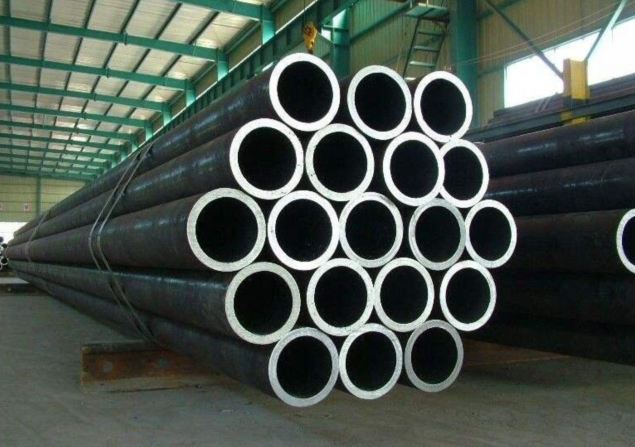
Boiler Tube Selection and Welding
What is boiler tube ?
Boiler tubes are metal tubes located inside a boiler that are used to heat water to create steam. There are two main types of tube boilers: water tube boilers and fire tube boilers. According to the production method, it can be divided into seamless boiler tube and welded boiler tube.
In a water tube boiler, water circulates inside the tubes and is heated externally by the hot gases produced in the furnace. With a fire tube boiler, hot gases pass through one or more tubes, heating the surrounding water through heat conduction.
How to choose boiler tubes?
Choosing the right boiler tubes is an important step in ensuring safe boiler operation. The following points are what you need to pay attention to when choosing boiler tubes:
1. Pipe diameter and wall thickness: When purchasing boiler pipes, the appropriate pipe diameter and wall thickness should be selected based on the boiler's usage conditions. If the pipe diameter is too small or the wall thickness is insufficient, it will lead to safety problems such as excessive boiler pressure and water leakage.

2. Material: The material of the boiler tube is also very important. Different boiler uses require boiler tubes of different materials. Generally, low-pressure boilers use ordinary carbon steel pipes, medium- and high-pressure boilers use alloy steel pipes or stainless steel pipes; ultra-high-pressure boilers need to use special materials.
3. Corrosion and heat resistance: Different boiler usage environments will also affect the selection of boiler tubes. For example, in acid, alkali, high temperature and other environments, boiler tubes with corrosion resistance and heat resistance need to be selected.
Things to note when welding boiler tubes:
When repairing a boiler or installing boiler tubes, the boiler tubes need to be welded. The following are issues you need to pay attention to when welding boiler tubes:
1. Welding position and angle: When welding boiler tubes, you need to pay attention to the welding position and angle. During the welding process, ensure that the welds are neat and firm to avoid problems such as cracks and pores.
2. Types of welding electrodes: Boiler tubes of different materials require different types of welding rods for welding. Generally speaking, carbon steel boiler pipes can use E43 series welding rods, while alloy steel boiler pipes need to use E70 series welding rods.
3. Welding temperature and time: When welding, the temperature and time should be strictly controlled. The welding temperature should comply with the requirements of the welding materials, and the welding environment should be kept clean and hygienic to avoid affecting the welding quality.
Technical requirements for welded steel pipes for boilers:
(1) Stable high temperature durability strength, plasticity and creep strength. Boiler steel pipes work under certain temperatures and pressures, and various technical indicators under certain temperature conditions must have certain stability;
(2) Certain antioxidant properties and corrosion resistance;
(3) Good processing properties, such as welding performance and excellent flattening, flaring, and cold bending properties, making it easy to process and manufacture;
(4) Good internal and external surface quality and dimensional accuracy;
(5) Good weld quality. In order to ensure the quality of welds, the raw materials used for welded pipes are even higher than the quality requirements for steel for seamless steel pipes, and the impurity and gas content are more strictly controlled;
(6) The requirements for cleaning internal and external burrs of welds are more stringent, and the residual height and dents should be controlled within 0.15mm, or even smaller.
Boiler tube uses:
Generally, the operating temperature of boiler tubes is below 350°C. They are mainly used to make water-cooled wall tubes, boiling water tubes, superheated steam tubes, superheated steam tubes for locomotive boilers, large and small smoke tubes and arch brick tubes, etc.
High-pressure boiler tubes are often exposed to high temperature and high pressure conditions during use. Under the action of high-temperature flue gas and water vapor, the tubes will oxidize and corrode. Steel pipes are required to have high lasting strength, high resistance to oxidation and corrosion, and good structural stability. It is mainly used as superheater tubes, reheater tubes, air guide tubes, main steam tubes, etc. for high-pressure and ultra-high-pressure boilers.
In short, choosing the appropriate boiler tube and the correct welding method play an important role in the safe operation of the boiler. When purchasing boiler tubes and welding, you should carefully compare various parameters and details, and comply with relevant safety operating procedures to ensure the safe operation of the boiler.


